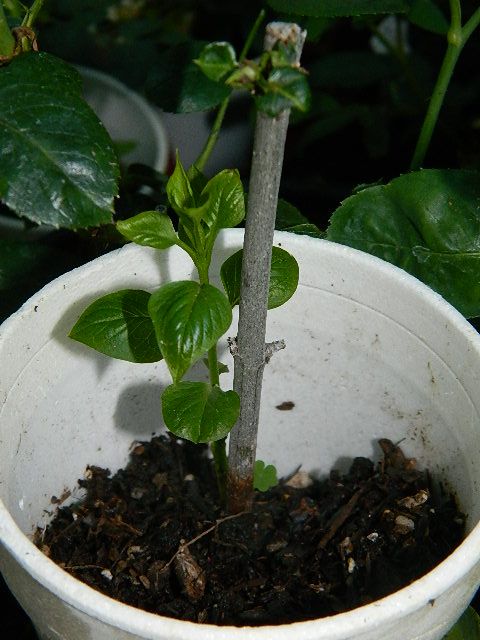One of the many fun things about learning to propagate is exploring what else might work with similar methods. Lilacs are known to be a difficult plant to propagate. Home propagation is usually most easily accomplished by waiting for the plant to sucker, the suckers develop then digging the rooted suckers. This has worked perfectly for me for many years. It's the waiting for them to finally sucker so they can be dug and potted that is frustratingly slow. Commercially, they can also be time consuming and difficult to produce. In the past, lilacs were often grafted to privet cuttings. More recently, tissue culture has been used to produce named varieties. Ralph Moore discovered very small, soft cuttings could be fairly easily rooted under mist.
So, this past winter, I processed some lilac cuttings exactly as I did the roses, even put them in the bag with some of the roses. Five cuttings were started. Four made it out of the wraps and into the foam cups. Recently, the fourth one turned crisp and failed. But, there are now three lilac cuttings with three new basal shoots growing nicely from somewhere under the soil. Take a look!
It's taken approximately seven months to go from leafless wood to this. They're still in the same potting soil, the same cups and growing in the filtered shade of the surrounding potted roses, most of which were wrapped cuttings seven months ago.



No comments:
Post a Comment